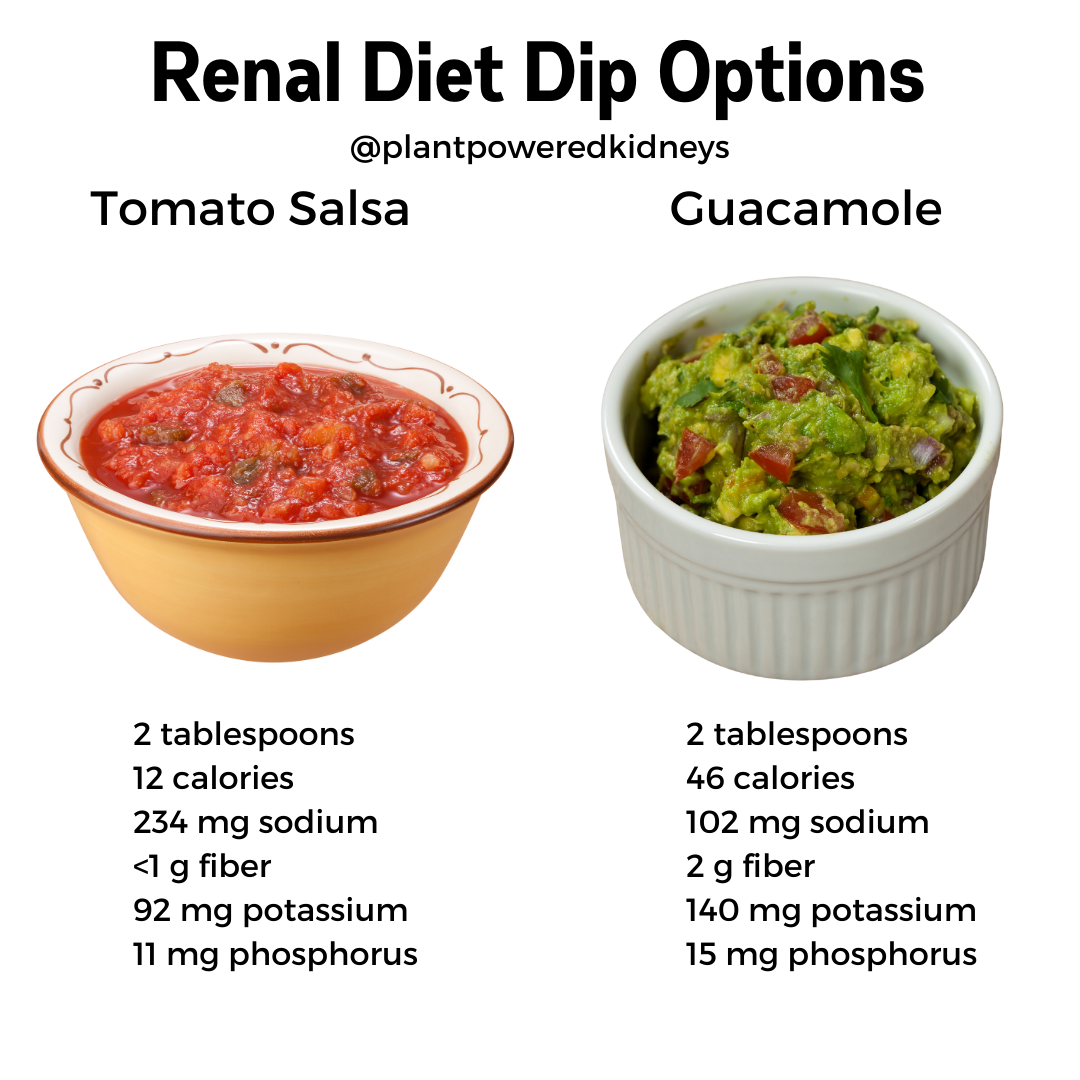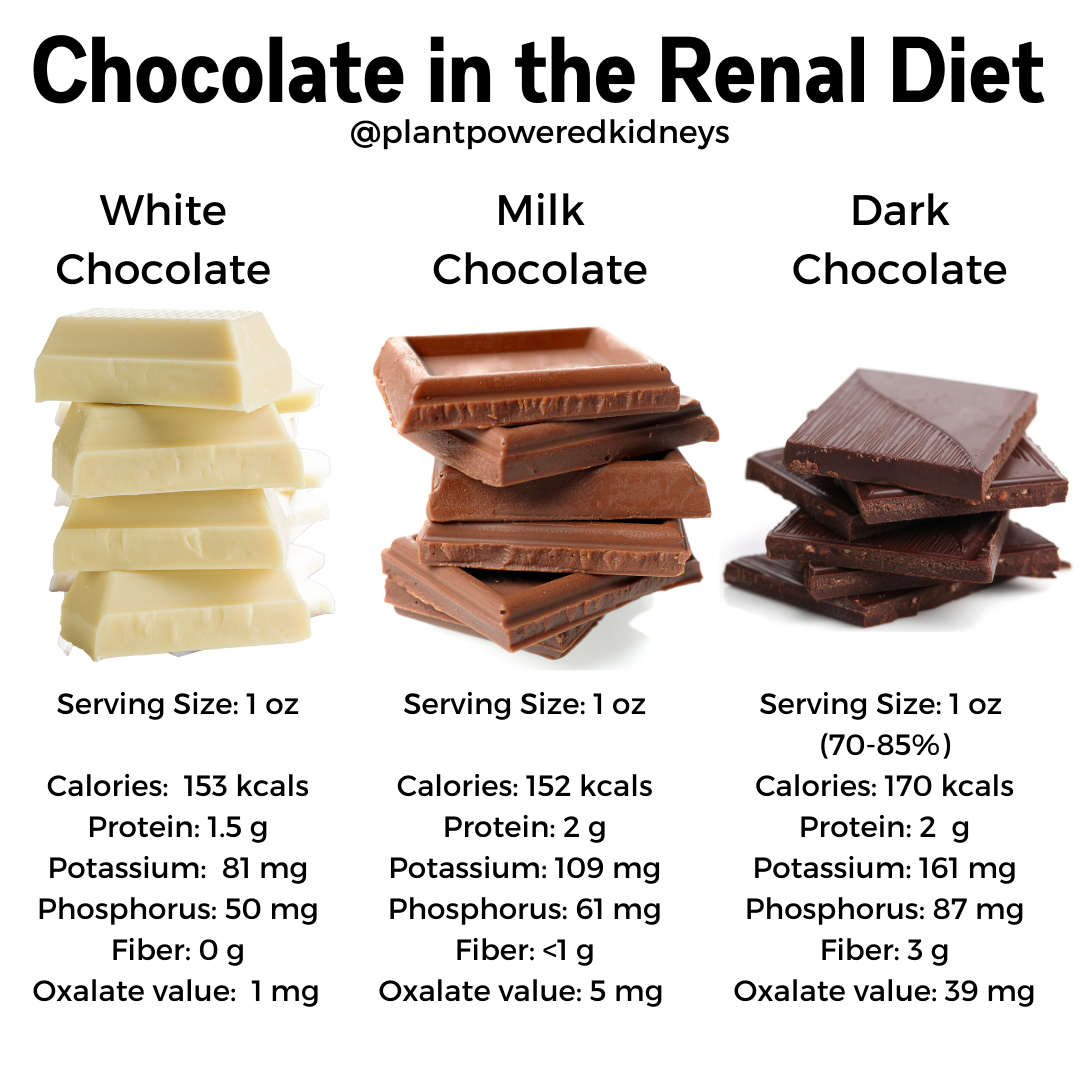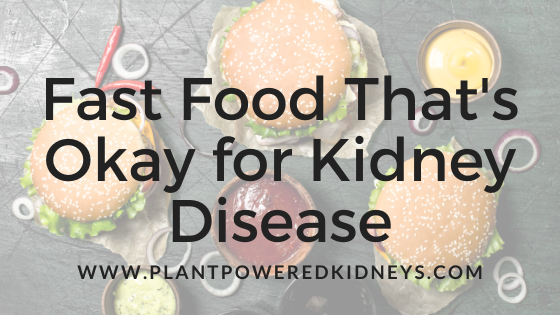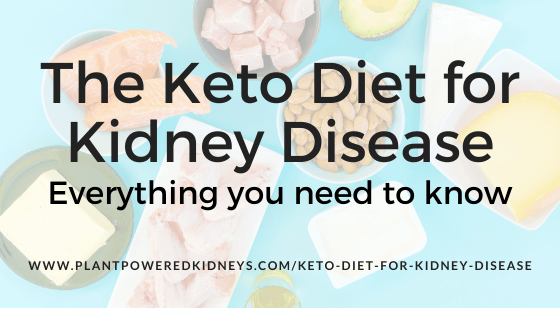When it comes to renal diet snacks, it’s important to pay attention to the nutrients like phosphorus and potassium.
So whether you need low-potassium snacks or low-phosphorus snacks, we’re here to help.
Table of Contents
Why Snacks are Important
There’s a few benefits to include healthy renal diet snacks.
Keeps Up Energy
Snacks are meant to fuel us. When we are running around, taking care of errands, kids, grandkids, and just living life.. we need energy.
This is especially true for kidney patients.
People with kidney disease may have higher energy needs. This will be based on a number of factors, including age and activity level.
For those fairly active, calorie needs may be upwards of 35 calories per kilogram of body weight (35 kcal/kg).
This can be challenging to get in just three meals a day.
Not only this, but it’s important to pay attention to your body. Are you hungry between meals? Don’t ignore it.

Provides More Nutrition
Beyond calories, snacks are a great way to get in more nutrition like fiber, micronutrients, and even our macronutrients – carbohydrates, protein, and fat.
Enjoying nutrient-dense snacks can be satisfying and healthy for our bodies and kidneys.
Renal Diet Snacks: The Guidelines
The intention of a snack is to help satisfy our hunger until we are able to eat a full meal. We recommend renal diet snacks should aim for the following guidelines:
- 100 to 250 calories
- Less than 240 milligrams sodium
- Between 150-300 milligrams of potassium
- At least 2 grams of fiber
- No phosphate additives
You may need to keep protein in mind as well, depending on your own kidney function and protein needs. Learn more about the low-protein diet here.
Low Potassium Snacks
Your renal diet snacks may need to be low in potassium. Low-potassium snacks may sound challenging, but they don’t have to be.
Low potassium is generally defined as 200 milligrams or less potassium per serving.
Low Phosphorus Snacks
Another concern that is common with the renal diet is phosphorus. The number one focus to make when keeping to a low-phosphorus diet is to avoid phosphorus additives.
This is found in the ingredients section of a nutrition label.
Any ingredient that includes the letters P-H-O-S (for example, PHOSphoric acid) is an added phosphate that can be harmful to your bones.
You’ll be saving a lot of phosphorus by avoiding these types of ingredients.
If you’ve been directed to limit your phosphorus intake, some of these renal diet snacks may be better options.
Low Sodium Snacks
Most people with kidney disease will need to limit sodium, regardless of stage or situation. Snacks are one of the areas in our diet that can add up in sodium quickly without even realizing it.
Stick to a low sodium snack of less than 240 milligrams at a snack time.
We’ve got an entire other blog dedicated to over 19 low-sodium snack ideas here.
How to Make a Snack Satisfying
One of the most important parts of a healthy snack is to make sure it’s satisfying. There are several ways we can ensure this happens.
While many snacks are centered around carbohydrates (think chips, crackers, cookies, and pretzels), this will not usually have enough nutrition to keep us satisfied for long.
So when you are looking at a carbohydrate snack, try to include one of these other nutrients along side it.
Fiber-Rich Foods
Fiber helps slow down blood sugars and keeps us full longer.
Examples of fiber-rich foods include fruits, vegetables, and whole grains.
Healthy Fats
Fats are another nutrient that helps us feel full longer. Healthy fats are especially helpful on a renal diet for those that need to limit protein or carbohydrates.
Examples of healthy fats include nuts, seeds, avocados, and oils.
Still need some inspiration for what a healthy renal diet snack looks like? Let’s dive into some examples.
See if you can pick out the carb, fiber, and healthy fats in the snacks to understand why we paired these foods together.
Savory Renal Diet Snacks
When you need something salty, look at savory snacks. These will provide that savory taste but fit into a renal diet.
Cucumbers with Hummus
Slice up a 1/2 cup serving of cucumbers and pair with 2 tablespoons of hummus.
Hummus provides only 34 milligrams of potassium per tablespoon. With a half cup of sliced cucumbers, you’ll add 76 milligrams of potassium.
The total potassium for this snack is about 144 milligrams of potassium with approximately 2.5 grams of fiber.
Popcorn with Nutritional Yeast
A one-cup serving of air-popped popcorn will provide only 29 milligrams of potassium. This means 2 cups is still easy to keep as a low-potassium snack at 58 milligrams of potassium.
The nutritional yeast will provide 66 milligrams of potassium per tablespoon, but a little goes a long way with this flavorful food enhancer.
Sprinkle on some garlic powder for another level of flavor, or cayenne if you enjoy some heat.
Celery & Cream Cheese
Think of this like the savory cousin of “ants on a log.” One 8-inch stalk of celery has just 104 milligrams of potassium.
Spread a cream cheese of choice – regular or plant-based, into celery. Kite Hill® makes a great almond-milk-based cream cheese alternative.
Top with a light sprinkling of Dash’s Everything Seasoning.
Tortilla Chips with Salsa
If you’re looking for something crunchy, try reaching for low-sodium tortilla chips with salsa. Tortilla chips are generally very low in potassium at about 60 milligrams per one-ounce serving.
Ready-made salsa has approximately 92 milligrams of potassium per 2-tablespoon serving. Check ingredients to avoid phosphates.
For other salsas, try corn or tomatillo-based salsa that is lower in potassium. Don’t ignore guacamole, though.

A 2-tablespoon serving of guacamole has 160 milligrams of potassium. Pair that with tortilla chips and you’re right around 200 milligrams of potassium – plus a little boost of fiber.
Sweet Renal Diet Snacks
If you’re on the sweet side of snacks, we’ve got you covered with some tasty options that still provide a lot of nutrition and fit into a renal diet.
Cashew Yogurt with Blueberries
Grab a single-size container of coconut yogurt (usually 5.3 ounces). We like Forager® vanilla cashew yogurt. This one has just 41 milligrams of potassium.
If there’s enough room in the container, toss in a 1/2 cup of blueberries. This adds about 50 milligrams of potassium. Otherwise, move the yogurt into a larger bowl and top with berries.
While made from cashew, the potassium in cashew yogurt is low enough that it is rounded down to zero milligrams of potassium. Adding a low-potassium fruit like blueberries will provide antioxidants and fiber.
Other plant-based yogurts made from coconut or soy milk can also make for excellent renal diet snacks. However, these yogurts by themselves won’t be very filling.
Be sure you pair it with some fiber-rich and low-potassium fruits like blueberries, strawberries, grapes, or pineapple.
Strawberries with Chocolate
Pair five medium strawberries with a one-ounce serving of white chocolate. A medium strawberry has just 19 milligrams of potassium.
That means 5 strawberries will be less than 100 milligrams of potassium. However, those five strawberries also provide 1 gram of fiber, which is very helpful for a renal diet.
Chocolate often shows up on the “foods to avoid” lists when it comes to a renal diet, low potassium or not.
But by savoring one square of white chocolate, you’re only adding approximately 80 milligrams of potassium.

Rice Cake with Cream Cheese & Jam
Rice cakes are back. But this time, it’s all about the topping.
Rice cakes alone do not provide much nutritional value. However, you may be able to find some rice cakes made from brown rice. This will give them an extra boost of fiber.
Spread one tablespoon of low-fat cream cheese (or vegan cream cheese alternative) along with 1 Tbsp of your favorite fruit jam (not jelly) on top of a low-sodium rice cake.
We’re big fans of the cherry jam & cream cheese combo.
Frozen Fruit Pop
While ice cream can be higher in phosphorus, fruit pops won’t be. Fruits and vegetables are not a source of phosphorus, but will have potassium.
Make your own by blending up some of your favorite fruits along with water or fruit juice, then freezing in a popsicle mold or cups with popsicle sticks.
Try pineapple, which has just 137 milligrams of potassium per 100 grams (3.5 ounces). Add water or a splash of juice, blend, and pour into popsicle molds.
It has just about 1 gram of fiber in 100 grams, so if you want to make it a little more filling, sprinkle in some chia seeds for fiber, plant protein, and a little added texture.
Homemade Trail Mix
While traditional trail mix can be very high in both potassium and phosphorus, you can easily make your own trail mix that is more renal diet friendly.
Try making your own with some Rice Chex, freeze-dried fruit like strawberries, a few of your favorite nuts.
Need a sweeter part? Try some kidney-friendly cereal options Honey Nut Cheerios or sweetened Chex. Lightly sweetened cereals will provide that sweet crunch and also more volume to your snack.
Summary
Your renal diet snacks should serve a purpose in your day and diet. They’re not to let us mindlessly munch on packaged products. It’s to fuel our bodies and give ourselves a boost of energy to continue our day, or carry us through the night.
By having some great go-to snacks available in your kitchen, you’ll doing yourself – and your kidneys – a huge favor.



Yes
TYVM
One of my favorite things to snack on is a dark leafy mixed salad with lots of red onion, oeels from carrots and from berts! But I eat it with an iat flour and water homemade tortilla or flatbread/roti! And soritz bread and salad with liquid aminos and a sprinkle of my homemade vegan parm! Its sort of like a salad taco. It’s delicious and full of fiber!
Yum- sounds delicious!
Thanks so much for the suggestions- this is such a HUGE help to me!! Leslie Lynch
Wonderful! I’m glad these suggestions have been helpful for you. 🙂
What about air popcorn for a snack? Is it high in potassium and phosphorus?
Popcorn is a kidney-friendly snack! Low in potassium and phosphorus- just check the nutrition label and ingredients list first. Also, be sure sodium and saturated/trans fats aren’t crazy high.
These ideas sound great. I looked up chia and hemp seeds but it said it was high in phosphorus. Is that true because it has a lot of health benefits to it as well. Debbie
Hi Debbie! Chia and hemp seeds do have some phosphorus, but it is likely natural/organic phosphorus. You should definitely read up on my other blogs about Low Phosphorus Foods I think you’ll enjoy the info! 🙂
Jen
We were looking for snacks for my husband who has CKD, stage 4. We thought, for example that peanut butter and avocado’s were no-no’s due to Potassium content. Is there an insight we’re missing?
Hi Linda! Great question. The thing about potassium is that even with a restriction, some is still needed. I talk about this in my article for The Low Potassium Diet that you may find helpful. Another thing- we spend the first week of the Plant-Powered Kidneys course talking all about potassium. We will be starting up again in a few months if you’d like to join us. 🙂
I use barley flakes with cocunut milk, flak seed, stevia and blueberries as a snack. Also, the previous link you posted for phosphorus does not work.
Thank you for letting me know, John. I’ll make that fix!
Great information. I love my snacks.
Snacks are an important thing to enjoy! 😀
What rice cakes are okay to eat on a renal diet. There are so many different kinds
There are a lot you can choose from! Brown rice cakes will be nice that they have a *little* extra fiber, but even white rice ones will work too. They’re low in calories and need some extra nutritional boosts. Just be sure to check for additives with potassium or phosphates, and choose low sodium when possible.